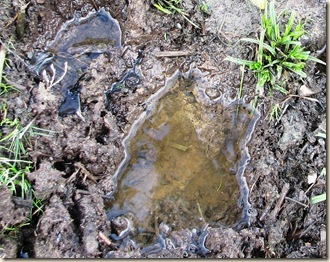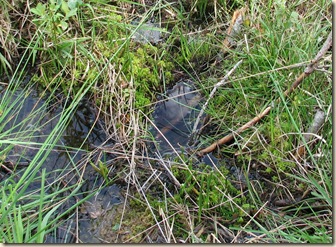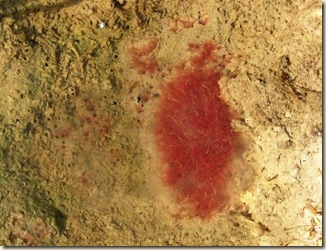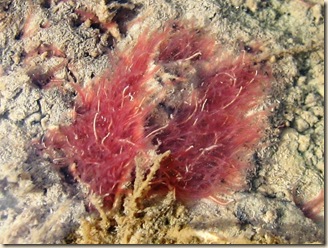This very wet summer has its compensations and there are many small water bodies in Brede High Woods at the moment that offer a specialised habitat to the various plants and animals that need them.
In the areas where the cattle graze there are plenty of water-filled hoof prints and there are some insects that use such a very ephemeral habitat. The caddis fly Limnephilus sparsus, for example. A widespread species, but with only one Sussex record so far (Chailey Common).
Plants that flourish in small scale aquatic environments include remote sedge, Carex remota, seen here at the edge of an iron-stained stream that would normally be dried up by now.
In the cart ruts there are pools rich in lesser spearwort and water-starwort (Callitriche), whose leaves can almost cover the surface as below.
Where the soil is very acid and boggy there are some good colonies of sphagnum moss much more associated in my mind with moorlands and uplands.
Something new to me was a strange red cloud I noticed on the muddy bottom of a small, clear puddle in one of the rides. I thought at first it might be a leaf, or a dense cluster of water fleas, but closer inspection showed it to be a colony of tubifex worms, almost certainly Tubifex tubifex which, like us, use the red-pigmented haemoglobin to carry oxygen around their bodies.
Each 'cloud' is composed of hundreds of small worms, head down and writhing around together like the tentacles of a sea anemone.
These pools and puddles may be small, but there is much going on in them and, when they dry up, most of the residents have survival strategies to tide them over until the next deluge.





